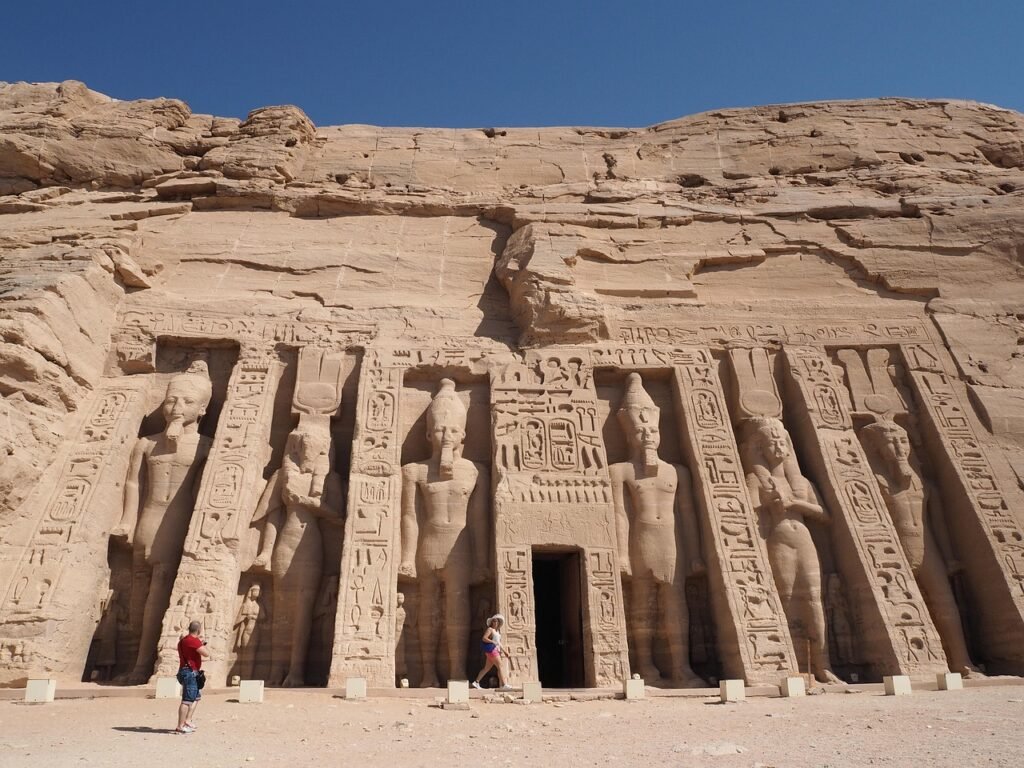Summary
- The Abu Simbel Temples Relocation Project stands as one of history’s most ambitious architectural feats, preserving ancient Egypt’s monumental heritage against rising waters caused by the Aswan High Dam.
- Originally commissioned by Ramses II around 1264 BCE to honor the sun gods and Queen Nefertari, the temples featured colossal statues and precise solar alignments.
- In the 1960s, the construction of the dam threatened to submerge them, prompting an international effort led by UNESCO.
- Over four years, engineers carefully cut the temples into massive blocks, transported them 200 meters inland and 65 meters higher, and reassembled them on an artificial cliff to preserve their astronomical alignment.
- The project symbolizes the delicate balance between preserving ancient wonders and embracing modern progress, showcasing global cooperation and innovative engineering to safeguard one of Egypt’s greatest archaeological treasures.
The Abu Simbel Temples Relocation Project is one of the most ambitious and complex architectural projects in the history of the world. The Egyptians and the entire world were tasked with a seemingly impossible mission that sought to save one of the oldest archaeological milestones in existence. The whole Abu Simbel relocation project paints a picture of the harmful effects of industrial innovations on one of the most glorious wonders of the ancient world, as if the new, advanced world is trying to sink the old world, but with the grace of god, passion of historians & archaeologists, and the innovation of modern science has led to finding a moment of balance between the old and the new, and the temples was cut and transported to a new location where it can shine with glory powerfully under the power of the sun.
The Story of the Abu Simbel Temples Relocation Project
Everything started in 1244 B.C when Ramses the great ordered to commemorate his legacy and honor the many gods of the sun and his wife Nefertiti by constructing what is known today as Abu Simbel Temple in the deep south of Egypt where it stayed for the next thousands of years until the temple need to be relocated before being destroyed by the sudden rise of Nile river water levels due to an idiotic human error is known as the Aswan High Dam.
The Reasons Behind Abu Simbel Temple Relocation
In the mid-1950s, the Egyptian government decided to build a dam in the city of Aswan in the hopes of controlling the Nile floods and generating Electricity, which led to the rise of the water level in Lake Nasser and submerging priceless monuments around it, such as the Abu Simbel Temple. In 1959, the Egyptian Government sends a request the Unesco for help in rescuing Abu Simbel, and in 1960, the world showed its true colors as an international fund-raising for the rescue operation began and a Swedish company by the name”Vattenbyggnadsbyrån” came up with a complex matter of how the temples could be saved.
The State Of Abu Simbel During Relocation
The temples of Abu Simbel were originally built during the reign of Pharaoh Ramses II around 1264 BCE to honor the ancient Egyptian deities Ra-Horakhty, Ptah, and Amun, as well as Ramses II himself. Even today, the two massive rock-cut temples stand as one of ancient Egypt’s greatest architectural achievements.
The larger of the two temples, dedicated to Ramses II, features four colossal statues of the pharaoh himself at the entrance, each towering about 20 meters (66 feet) high. The smaller temple, dedicated to Ramses’ beloved wife, Queen Nefertari, features statues of both the queen and the pharaoh.
Before the relocation, the temples were set directly into the sandstone cliffs along the Nile, where their position was intentionally aligned so that twice each year, on February 22 and October 22, the rising sun would illuminate the inner sanctuary of the Great Temple, lighting up the statues of the gods. This precise solar alignment was not only a testament to the advanced astronomical knowledge of ancient Egyptian architects but also a symbol of the pharaoh’s divine connection to the gods.
The Steps of the Abu Simbel Temple Relocation Process
The temple was carved into a cliff so they were peeled away and then cut into blocks using power saws, each block weigh between 20 to 30 tons, then moved to a different location and assembled like a game of logos using drilled holes, reinforcement bars into an artificial cliff resembling the original on a platform of cement & steel and surrounded by an artificial stone mountain.
This operation took four years from 1964-1968 and cost 300 million dollars in today’s value. The new site was 65 m high and 200m further inland and was precisely reconstructed to illuminate the sun gods’ sanctums like Amon-Re and Re-Horakhty in February and October during certain hours in the spring and autumn using the sun rays. The entire complex was declared a UNESCO World Heritage site in 1979.
Explore the Epic Abu Simbel Relocation Cost
In the early 1960s, the construction of the Aswan High Dam on the Nile River threatened to submerge the temples of Abu Simbel under the rising waters of Lake Nasser. In response, an ambitious international campaign, led by UNESCO, was launched to save these monumental structures.
The cost of relocating Abu Simbel, a feat that would ultimately require cutting the temples into large blocks, transporting them, and reassembling them 65 meters (213 feet) higher and 200 meters (656 feet) further inland, was around USD 40 million (close to 400$ mi in today’s value) which was a staggering sum at the time. This monumental effort involved a skilled team of engineers, architects, and laborers from all over the world, who worked tirelessly to ensure the temples’ survival.









